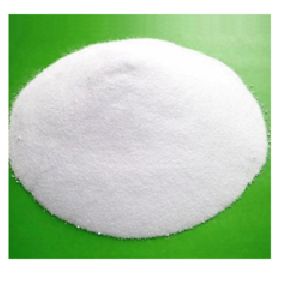An antimicrobial agent is a substance that can inhibit microorganism growth in any medium.Some antimicrobial agents include benzyl alcohols, bisbiquanide, trihalocarbanilides, ethoxylated phenols, cationic surfactants, and phenolic compounds.
Phenolic antimicrobial agents like 4-chloro-3,5-dimethylphenol (PCMX)or para-chloro-meta-xylenol (PCMX) inhibits microorganisms by disrupting their cell wall or by deactivation the enzyme.
Phenolic compounds are slightly soluble in water. Hence, their solubility is mended by adding surfactants.In that case, the composition of a para-chloro-meta-xylenol (PCMX) antimicrobial agent is dissolved in a surfactant.
PCMX is an awaited antimicrobial substitute and is principally active against a broad spectrum of bacterial strains, fungi, and several viruses. PCMX shares a phenolic backbone and is related to chemicals like carbolic acid, cresol, and hexachlorophene.
However, when sourcing for the potential chemical for your antimicrobial sanitizers, it is advisable to ask a trusted manufacturer for 4-chloro-3,5-dimethylphenol (PCMX)for a sure bet.
Composition of PCMX Antimicrobial Agent
Despite the antimicrobial efficacy of PCMX as a desirable antimicrobial agent, formulation of PCMX is the major challenge because PCMX is slightly soluble in water. Also, it discordancy with several surfactants and other kinds of compounds.Therefore, its effectiveness is highly compromised due to many factors, including a surfactant, solubility, and pH value.
Conventionally, two techniques are adopted for solubilizing PCMX, namely dissolving using a high-quantity of surfactant and water-miscible anhydrous reagent complex.

i.Dissolving PCMX using a high-quantity of surfactant
This technique of dissolving antimicrobial agent using a high quantity of surfactant is employed in antiseptic soap.
Times the solubilization is carried out in the presence of volatile organic compounds such as alcohol.The percentage composition of these volatile organic compounds ranges from 60% to 70%.
The alcoholic content affects the odor, drying and contributed to skin irritation. Besides, once the solvent disperses, the potency of the PCMX may be a bargain.
ii.Water Miscible anhydrous reagent compounds
The use of a water-miscible anhydrous compound increases the solubility of PCMX, especially at a reduced level between 0.1% and 0.5% in water concentration above 90%.
Examples of the water-miscible anhydrous compound include tiol, diol, amine, or a mixture of any of them.
These compounds preferably consist of a blend of propylene glycol, glycerin, and total essential alcohol (TEA). Para-chloro-meta-xylenol is mixed with or without heating until it is dissolved completely.
Another water-miscible anhydrous solvent compound involves acrylic polymer, preservative, and polysaccharide polymer are separately mixed in a container to produce a polymer dispersion.It is worthy to note that the polymer dispersion formed does not result in precipitation in due course.
This method does not affect the efficacy of the antimicrobial agent even when they are in minute quantity. TEA can solubilize both low and high concentrations of PCMX.
Application of PCMX Antimicrobial Agent
1.PCMX antimicrobial agent can be used as an antiseptic, which inhibits microorganism growth without instigating injury to the skin.
2.As a disinfectant, this can be prepared in different forms, such as sanitizer.
Are You In Need Of 4-chloro-3,5-dimethylphenol (PCMX)?
We manufacture and supply high-quality products, including biocide, antibacterial, and antifungal, ranging from household to laundry care and detergent.Contact usto buy 4-chloro-3,5-dimethylphenol (PCMX)for your antimicrobial agent, and you will be overwhelmed with our services and products.
Post time: Jun-10-2021

